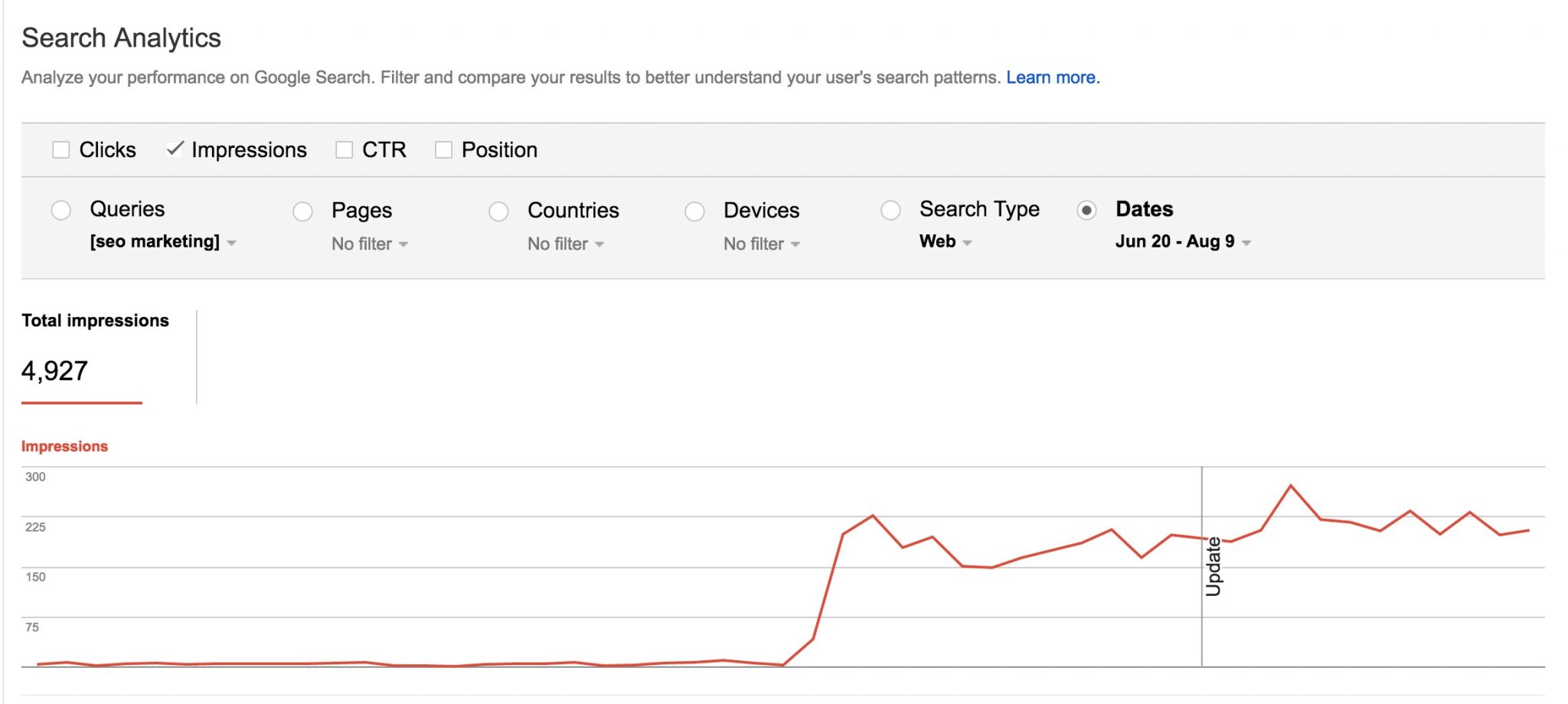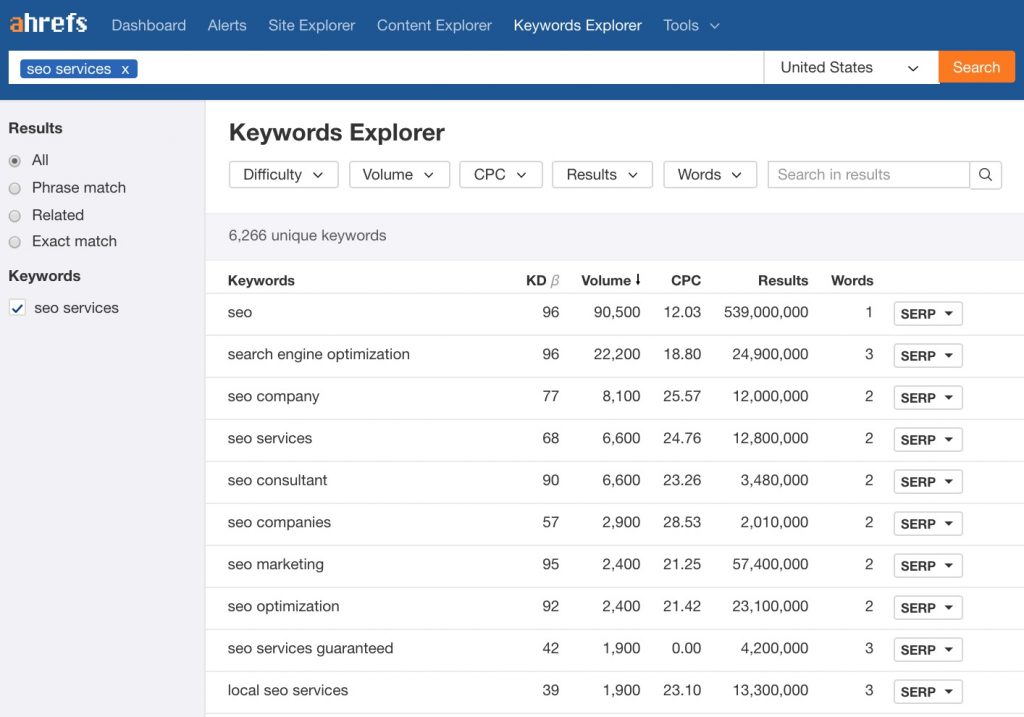Introduction to the SEO “Osmosis Effect”: We all want our key service pages to rank, but stuffing endless content into them and getting links through guest posting and other ways isn’t the only way to make it happen. Let’s do a mini case study on our own services. SEO services is a key page on our site, but it already has more than 2,000 words and links from places like SEMRush, Lifehack.org, Noupe.com and Business.com. It’s stacked, packed and jacked. But we can create another deep guide / content hub-type post. We can drive up its links for an adjacent term to “SEO services” and it will help our key service page rank as well for that first term.
A little background on the term osmosis. Osmosis in the study of science is the spontaneous movement of water through the membranes of plants. It’s really a “balancing out” from a place where there’s a greater concentration of something to a place where there is a lesser concentration of that same thing.
The SEO osmosis effect means that even though you have a greater concentration of a particular keyword in one area of your site, the ranking effect can take place in other key areas on your site for that term when you create things like hubs. Our service page is a great example of this because its ranking for a given term was driven up by the introduction of a content hub specifically on that term.
Not only that, but for us, we know the service page is converting well. People come to that page with buyer’s intent and it shares with them the relevant information they need for SEO services. They can choose to become a customer or not, but the right information is there for them to make an informed decision. What about when we want to pivot and target “SEO marketing” as well as “SEO services”?
We created a giant content hub with everything you’d want to know about SEO marketing and got links to it
This wasn’t a two-day one-man post. This was a content hub that took one month in planning and a five-person operation to give the world a real SEO crash course and rival the likes of Moz’s Beginner’s Guide to SEO. But the key here is that the SEO “Osmosis Effect” deeply affected the ranking for our key service page because we created the guide.
I believe that this kind of keyword osmosis is affecting people’s websites more than they realize it. Not only in blog posts, where someone creates content on a regular basis and understands intuitively that it helps their website rank for those terms, but even moreso by creating adjacent content on your site that is targeted at a high-value keyword, that it affects your other pages for that keyword as well. Let’s look at the evidence:
Creating big content hubs for adjacent terms deeply affects the related service pages, not just the content hub itself
Not long after publishing our deep guide to SEO Marketing, something curious started happening in Search Console:

We hadn’t built any links that referred SEO marketing to the service page. Everything around the service page was related to “SEO services,” but the guide was intended as a landing page AND a deep resource guide. What ended up happening is that the links we built to that page clearly had an effect not only toward the hub, but toward the key service page as well.
Extremely interesting.
I’ve noticed this kind of Osmosis effect on other content hubs as well. Sometimes the content hub will not do particularly well at all (like ours did) but will still impact the other pages on the site.
Perhaps some of you are saying, “We know this and this is why we do content hubs in the first place.” But I’m not quite sure it’s been so explicitly stated before, or that people really recognize how this should help you guide your content strategy, so let me lay out a few key steps to help you use this constructively for your site:
Keys to using the osmosis effect to help your primary service pages rank better in search engine results
You’ve likely done some research on what terms will be the most lucrative to go after for your service pages, but now it’s time to figure out what other terms have high search volume and are attainable. For us, our key term was “SEO service,” and our supporting term was “SEO marketing.” For your business, your key term could be “Pickled Carrots” and your supporting term could be “Pickled Root Vegetables,”but the point remains that it should still have a good amount of monthly searches to it and be something people want to learn more about.
Step One: Head over to AHref’s Keyword Explorer and type in your main term.

Step Two: Identify a keyword with relatively high volume that you would like to go after.
Step Three: Create an in-depth hub that informs someone about that term or that shows how to implement that service from a high level or choose a provider for that service.
Likely you won’t be able to wax poetic simply about buying pickled root vegetables for content hub levels, so perhaps you do the full how-to guide to pickle root vegetables, and for good measure you include an infographic and a lot of photos and pinterestable excellence.
Step Four: Monitor the effectiveness of your campaign through Search Console and a tool like Ahrefs, to see what kind of dent you made in ranking for the adjacent term.
I think I discovered the osmosis effect in SEO by accident, and by no means intended it to work this way. This is why experiments in SEO are so important and things need to be tested and monitored so you really get an accurate picture of how Google and Bing’s results are affected by your ongoing efforts. The osmosis effect is just one happy accident in a string of experiments I’ve made looking to see what kinds of intricacies affect ours and our clients’ search rankings.
